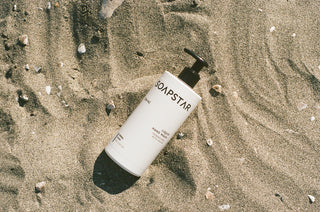The main reason why SOAPSTAR chooses natural alternatives in skin care products is that some synthetic additives may contain endocrine disrupting substances, which can disrupt hormone function and lead to various health problems.
Interference with hormone function can lead to several health problems, such as weight gain, infertility, diabetes and growth problems in children. Endocrine disruptors in synthetic additives can also disrupt normal hormone levels in the body, leading to overproduction or underproduction of certain hormones. This can cause a chain reaction. A chain reaction means that one change causes other changes. When synthetic additives disrupt hormone function, the body can produce too much or too little of certain hormones.
It is important to note that certain natural ingredients can also cause skin irritation in some people, due to the presence of allergens. However, they do not pose long-term health risks compared to some synthetic additives.
What are parabens?
Parabens are one of the most commonly used synthetic ingredients in skin care products that can disrupt hormone function. Parabens are added to products to inhibit the growth of microorganisms and keep products free of bacteria. These preservatives, commonly found in soaps, lotions, shampoos and other cosmetics, can mimic the effects of estrogen in the body, leading to a hormonal imbalance. Several studies have linked parabens to breast cancer. Examples of the most commonly used parabens are butylene glycol, propylene glycol and methylparaben.
Soap without plastic
Microplastics found in sunscreen, cosmetics, soaps and lotions are another type of synthetic additive that can enter our water sources and disrupt ecosystems. Microplastics are used in skin care products to provide exfoliation, improve texture and consistency, and bind ingredients together. These small fragments of plastic absorb harmful substances such as pesticides and fertilizers and then release them into water systems where they accumulate over time. Not only do these microplastics contaminate drinking water supplies, but they also act as sponges for toxins that can be ingested by aquatic organisms living in our rivers and oceans.
Free from parabens, free from microplastics
Unfortunately, it is difficult to completely avoid synthetic additives. However, by choosing natural alternatives whenever possible, you can reduce your exposure to potentially harmful ingredients. Natural alternatives such as plant-based soaps, oils or waxes can provide a safe way to nourish the skin without releasing additional toxins into the environment. At SOAPSTAR, we believe that smart choices about what we use on our skin can help protect us from potential health problems while protecting our planet's precious ecosystems. SOAPSTAR therefore chooses natural alternatives and all our products are free of parabens and free of microplastics.
Citations:
- Koo, J., & Maibach, H.I. (2001). "Irritant contact dermatitis in general dermatology practice." Dermatitis: Contact, Atopic, Occupational, Drug , 12(2), 67-75.
- Kjeldsen, L. S., & Bonefeld-Jørgensen, E. C. (2013). "Perfluorinated compounds affect the function of sex hormone receptors." Environmental Science and Pollution Research , 20(11), 8031-8044.
- Gore, A.C., Chappell, V.A., Fenton, S.E., Flaws, J.A., Nadal, A., Prins, G.S., Toppari, J., & Zoeller, R.T. (2015). “Executive summary to EDC-2: The Endocrine Society's second scientific statement on endocrine-disrupting chemicals.” Endocrine Reviews , 36(6), 593-602.
- Hostynek, J. J., & Maibach, H. I. (2004). "Allergic contact dermatitis to natural rubber." Contact Dermatitis , 51(1), 1-14.
View the ingredients of our products here and shop our products free of microplastics and free of parabens here .

